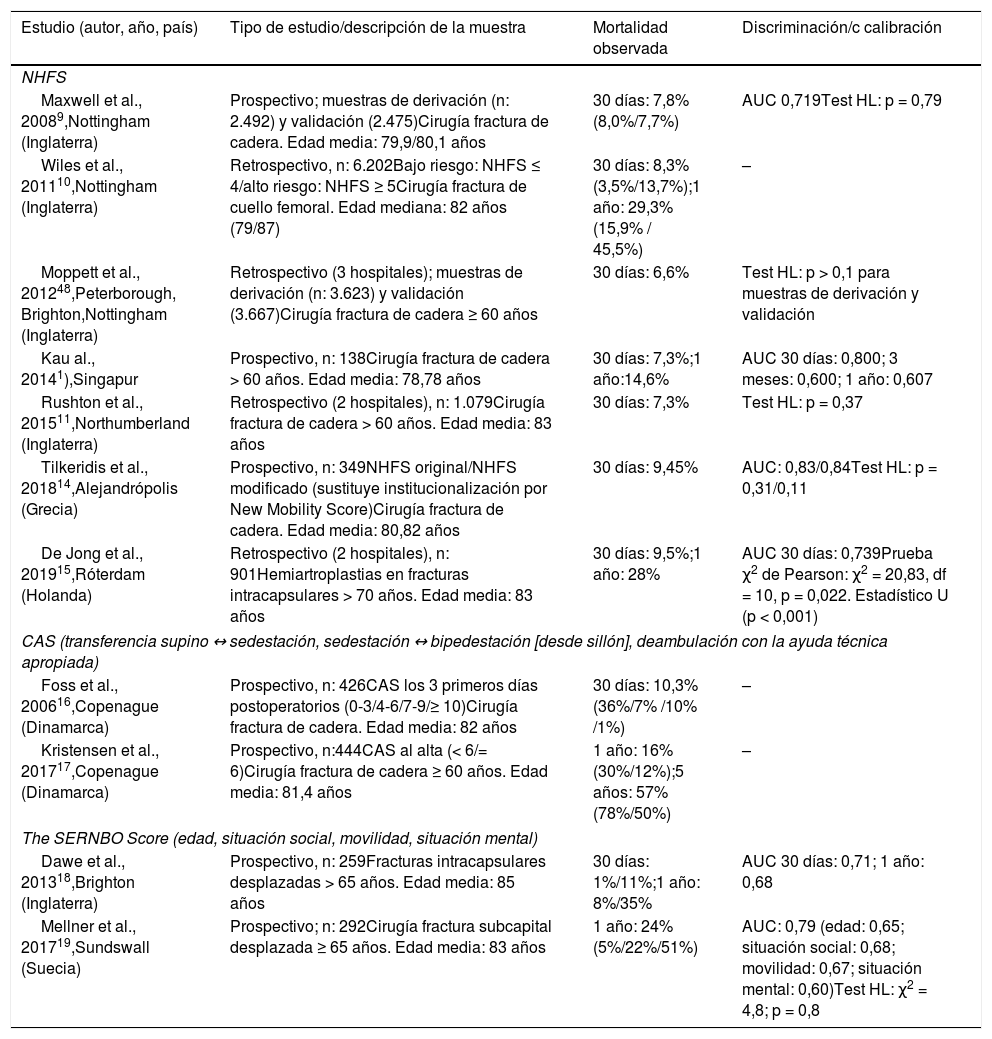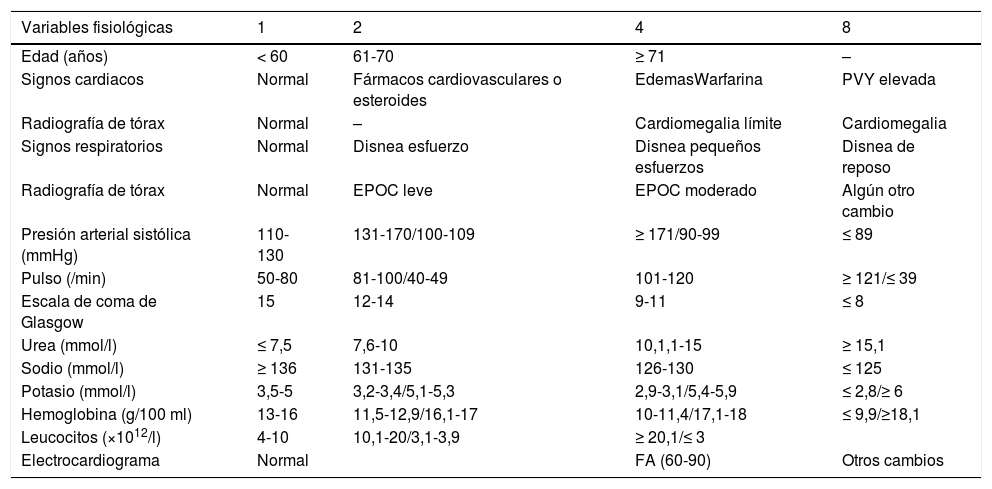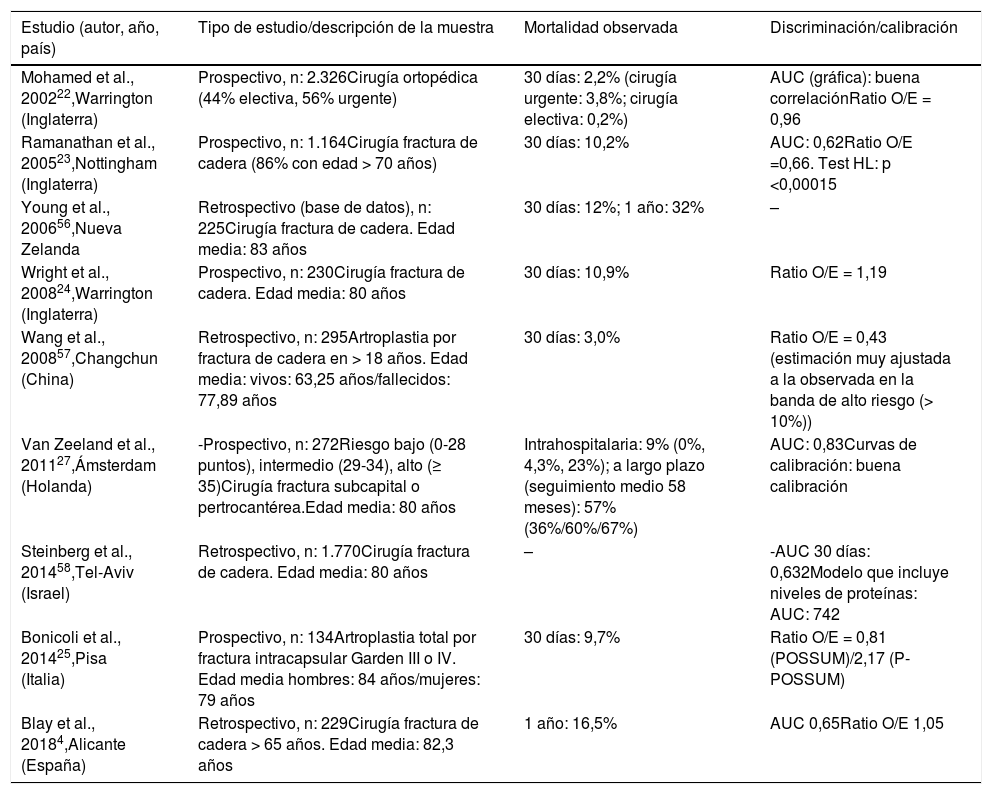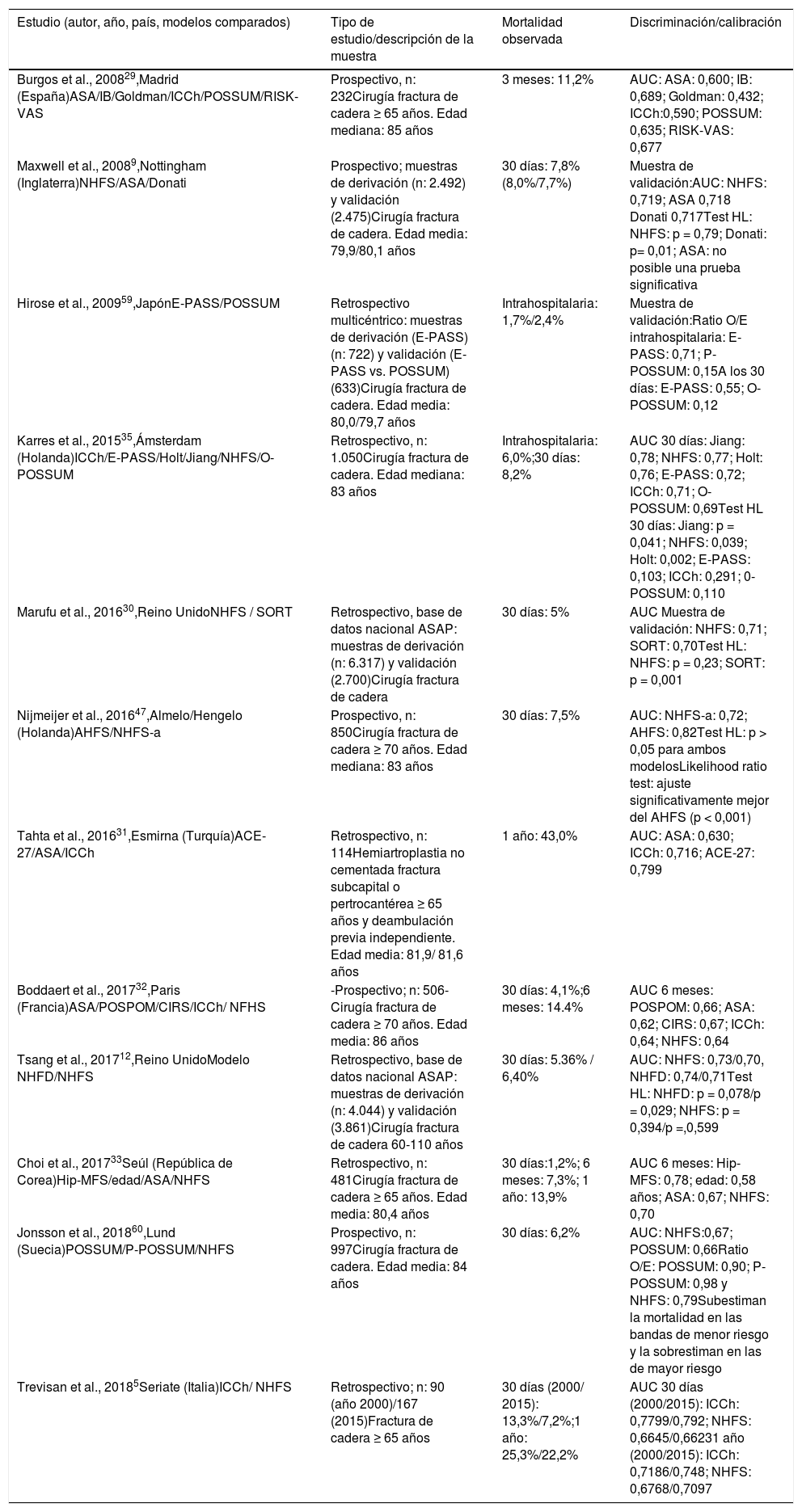La estimación preoperatoria del riesgo de mortalidad tras una fractura de cadera es de gran utilidad para planificar el momento de la cirugía y los cuidados perioperatorios, informar al paciente y familiares acerca del pronóstico, y establecer comparaciones entre distintas unidades. Se han desarrollado varios modelos para estratificar el riesgo de mortalidad, pero muestran heterogeneidad en cuanto a tipo de población, variables incluidas, tiempo de seguimiento y métodos estadísticos empleados, lo que hace difícil establecer comparaciones entre ellos. La gran mayoría está pendiente de validación externa en poblaciones diferentes de aquellas en las que se propusieron originalmente. El Nottingham Hip Fracture Score (NHFS) y el Orthopaedic Physiologic and Operative Severity Score for the enUmeration of Mortality and Morbidity (O-POSSUM) son los modelos más utilizados hasta el momento. El NHFS es más sencillo y rápido de aplicar, y al no incluir variables intraoperatorias se puede emplear en el momento del ingreso.
The preoperative estimation of the risk of mortality after a hip fracture is very useful to plan time of surgery and perioperative care, inform patients and families about the prognosis and allows comparisons between different units. Different models have been developed to stratify mortality risk, but they show heterogeneity in terms of type of population and variables included, monitoring the time and statistical methods used, which makes it difficult to establish comparisons between them. The vast majority of them are awaiting external validation in populations different from those in which they were originally proposed. So far, the Nottingham Hip Fracture Score (NHFS) and the Orthopaedic Physiological and Operative Severity Score for the enUmeration of Mortality and Morbidity (O-POSSUM) are the most commonly used models. The NHFS is simpler and faster to apply, and by not including intraoperative variables can be used at the time of admission.












